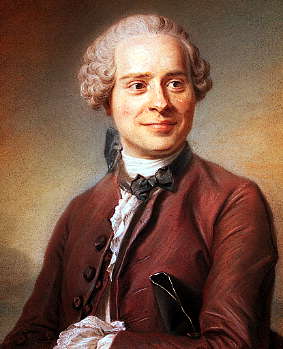- About MAA
- Membership
- MAA Publications
- Periodicals
- Blogs
- MAA Book Series
- MAA Press (an imprint of the AMS)
- MAA Notes
- MAA Reviews
- Mathematical Communication
- Information for Libraries
- Author Resources
- Advertise with MAA
- Meetings
- Competitions
- Programs
- Communities
- MAA Sections
- SIGMAA
- MAA Connect
- Students
- MAA Awards
- Awards Booklets
- Writing Awards
- Teaching Awards
- Service Awards
- Research Awards
- Lecture Awards
- Putnam Competition Individual and Team Winners
- D. E. Shaw Group AMC 8 Awards & Certificates
- Maryam Mirzakhani AMC 10 A Awards & Certificates
- Two Sigma AMC 10 B Awards & Certificates
- Jane Street AMC 12 A Awards & Certificates
- Akamai AMC 12 B Awards & Certificates
- High School Teachers
- News
You are here
D'Alembert, Lagrange, and Reduction of Order
Introduction
The analogy between linear differential equations
\[a_m(x) y^{(m)} + a_{m-1}(x) y^{(m-1)}+ \dots + a_1(x) y'+a_0(x) y = f(x)\]
and polynomial equations
\[a_m x^m + a_{m-1} x^{m-1}+ \dots + a_1 x +a_0 = 0\]
is an important topic in an undergraduate ordinary differential equations course. In college algebra, we show that if a solution to a polynomial equation is known, that solution can be factored out (that is to say, a linear factor involving the known root can be factored out) to obtain a new polynomial of degree \(m-1\). Similarly, given a solution to an \(m\)th order linear differential equation, we can reduce the order by \(1\). Furthermore, if \(k\) solutions are known, we can reduce the order to \(m-k\). This is called reduction of order or depression of order.
Many modern ODE texts, such as those of Zill [15, p. 33] and of Boyce and DiPrima [2, p. 166], present the same technique to reduce the order of a differential equation – a technique attributed to Jean le Rond d'Alembert (1717-1783) in 1766. Upon examining d'Alembert's primary sources, we were led to a different method due to Joseph-Louis Lagrange (1736-1813) that is absent from most modern classrooms. These techniques were shared between the two mathematicians in letters and later with other mathematicians in consecutive papers published in the same issue of the same journal. We'll show Lagrange's technique predates d'Alembert's, but there are good reasons why d'Alembert's is the one that survived history to be used today.
 |
 |
| Jean le Rond d'Alembert (1717-1783) This painting by Maurice Quentin de la Tour (1704-1788), done in 1753, is currently held by the Louvre Museum, Paris. (Wikimedia Commons, public domain) |
Joseph-Louis Lagrange (1736-1813) (Wikimedia Commons, public domain) |
Placing mathematics in accurate historical context is good pedagogy. Otero in [14, p. 34] notes history improves learning by providing context, motivation, and connections for the content. But utilizing history is also very general pedagogy as it can be used in support of almost any other teaching method chosen by an instructor. A healthy dose of history can improve the effectiveness of a traditional lecture course, a flipped class, online instruction, Moore method pedagogy, etc. for exactly the reasons described by Otero.
This also goes for ordinary differential equations where there has been a movement away from analytical techniques and towards modelling, technology, and geometric and numerical methods. These courses run the risk of becoming a “black box" where ideas come from nowhere and computers solve all the problems. Indeed some of our students think that ODE's are “modern" because we learn of them after calculus, use technology, and include models from biology, epidemiology, and economics. All instructors should have a passing knowledge of the history of ordinary differential equations to correct these basic misconceptions. After that, the class will only improve by including the development of the covered techniques, whether they are analytical like the method of d'Alembert presented here or numerical like Runge-Kutta or finite difference methods.
History also provides excellent access to topics outside the normal curriculum that might serve as enrichment opportunities for a subset of students. For those who want to delve deeper, we hope that it will be valuable to use the method of Lagrange presented here to show where techniques such as adjoint systems and operators come from.
Sarah Cummings (Wittenberg University) and Adam E. Parker (Wittenberg University), "D'Alembert, Lagrange, and Reduction of Order," Convergence (September 2015), DOI:10.4169/convergence20150901




